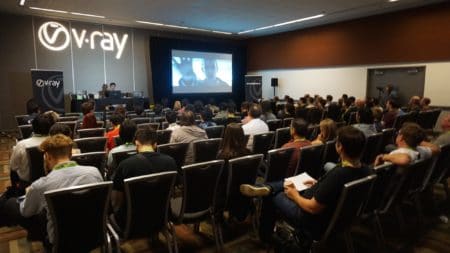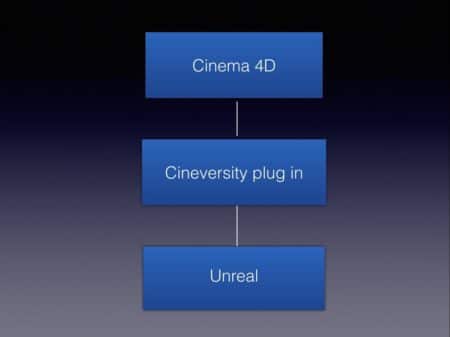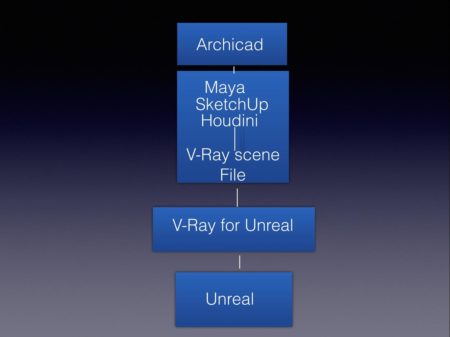SIGGRAPH 2018, in Vancouver, had a big focus on women in the field of computer graphics with prominent speakers of women in strong predominant roles. VR/MR/AR are still significant areas of development; this year the “Immersive Pavilion,” a Virtual Augmented and Mixed Reality Program, debuted. GPU technology is growing exponentially, defying Moore’s law.
Growth in Architects and Designers
Architect and designers with creative teams are putting together spatial experiences changing the way that people buy homes and plan cities. The effects of VR are not limited to just large design firms as smaller firms start to integrate VR/AR into their pipelines.
The session called “Architectural VR: The Hidden Giant, presented by Kilograph” at VRLA 2018 quoted a recent study that found that 50% of architectural firms are using VR or AR in their work and two-thirds were planning on doing VR work by 2019. Architectural Visualization in VR is growing though not many people are talking about it.
Marc Petit, of Unreal Engine, did a presentation at SIGGRAPH last year and stated that architectural firms in Europe were adopting the Unreal Engine in their visualization including using it for VR/MR/AR. We discuss below some of these products for these pipelines with new hardware innovations in the space.
Unreal Engine
Unreal Engine is no longer just for gamers. It has become one of the most widely used tools for creating VR. Unreal Engine provides multiple options for importing architectural models, scenes, and textures using software packages like 3DS Max, Maya, Houdini, Cinema 4D and much more.
At the moment TwinMotion is one of the most widely used solutions for architects using ARCHICAD on the Mac and PC. Unreal Engine Online Learning content is split into several tracks: Game Development, Architecture, Industrial Design, and Media & Entertainment. “Content” is also sorted by job roles and engine features. There are videos available anytime, on demand.
Firms who are buying Apple iMac Pros want to know all the options available to them for creating visualization and VR. These are a few, but more are coming every day.
Maxon
Maxon recently released version 20 of Cinema 4D with key highlights including:
- Node-Based Materials — providing possibilities for creating materials from simple references to complex shaders in node-based editors.
- New capabilities in MoGraph Fields; CAD Data Import can be seamlessly imported into Cinema 4D R20.
- Volume Modeling — used to create complex models by adding and subtracting basic shapes in Boolean-type operations.
- ProRender Enhancements in Cinema 4D R20 extends the GPU rendering toolsets with key features sub-surface scattering, motion blur, and multi-passes.
- Core Technology Modernization with substantial API enhancements.
I asked Paul Babb, President of Maxon USA, what the iMac Pro pipeline would look like for architects who want to do VR using an option without TwinMotion.
“TwinMotion is not the only way to get C4D assets into Unreal, there are many methods, including the [Maxon] Cineversity plugin we released early this year. However, a seamless workflow from Cinema 4D into the Unreal engine is certainly something that is of great interest to Maxon. I cannot comment on the progress of that effort, but it is a high priority. There are many solutions to work with C4D into Unreal. It is our goal to make that workflow even easier.”

02 – Maxon booth at show floor in Vancouver. (image: Vicky Gray Clark, Ambient PR / Architosh. All rights reserved)

03 – Paul Babb, CEO of Maxon, speaking at the press luncheon. (image: Vicky Gray Clark, Ambient PR / Architosh. All rights reserved)
I think Cinema 4D R20 is one most reliable software packages to consider when you are considering doing architectural visualization and VR/AR interactive presentations.
Chaos Group
Chaos Group previewed Lavina using Microsoft DXR to deliver 3 to 5 times faster ray-tracing performance over Volta generation with scenes imported from Autodesk Maya or 3DSMax. Chaos Group also has an option for exporting a V-Ray scene file from any V-Ray product of your choice into V-Ray for Unreal.
Chaos Group says, “V-Ray lights and materials will be automatically converted into real-time equivalents, and your original V-Ray assignments are maintained so you can still access V-Ray from within Unreal. Once you’re in Unreal, you can navigate in real time, and you can also render fully ray traced V-Ray images.” You can export V-Ray scene files from Maya, Houdini, and SketchUp on the iMac Pro right into Unreal. V-Ray for Maya, beta 2 is now available as is V-Ray for Houdini Beta.

05 – V-Ray Days presentation. (image: Colin McLaughlin, Liaison PR / Architosh. All rights reserved.)
Chaos Group also notes, “For Mac users that are using V-Ray for Maya, Houdini or SketchUp, they can freely access the beta of V-Ray Cloud and try free cloud rendering for a limited time.”
next page: OTOY, Allegorithmic, Nvidia, Autodesk and Closing Comments






Reader Comments
Unreal Motor bencede mükemmel ve gelişime çok müsait mecidiyeköy escort bayan olarak sıkı bir takipçinizim.
Unreal Motor bencede mükemmel ve gelişime çok müsait mecidiyeköy escort bayan olarak sıkı bir takipçinizim.
Comments are closed.